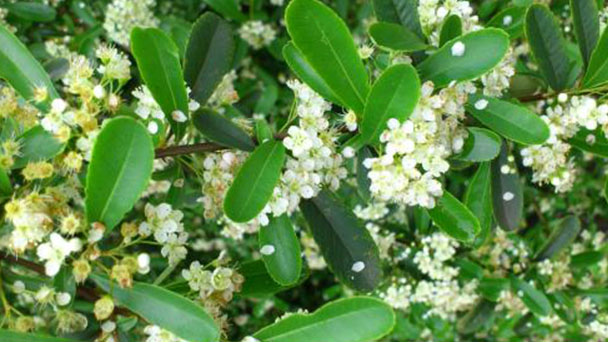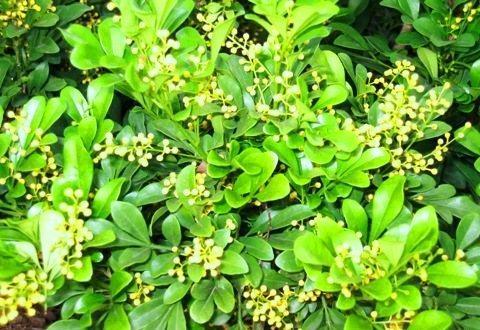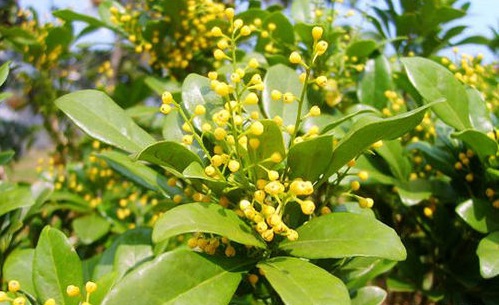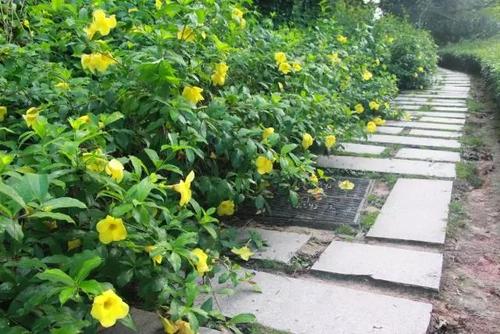Causes of Aglaia odorata leaf yellowing and solutions
Written by Maggie
Jan 20 2021

Aglaia odorata is one of the most popular flower plants. Its leaves are green and bright. It blooms many times a year and is at its peak in summer and autumn. But when Aglaia odorata are found in the breeding process, their leaves turn yellow very easily. What's going on? Let's analyze it together.

Reasons and for the yellow leaves of Aglaia odorata
1. Insufficient sunlight
The growth of Aglaia odorata needs sufficient sunlight. If it is kept in the shade environment for a long time, the nutrients accumulated by photosynthesis will be less, which will lead to yellowing and falling off of the leaves.
2. Improper watering
Aglaia odorata likes humidity. If the basin is not changed for a long time, the nutrients in the soil will decrease and the oxygen will be less, and the root system will be in a wet state for a long time after watering, and respiration will be inhibited. In addition, in the high temperature season, not timely watering, basin soil is too dry for a long time。 In the short term, the leaves will turn yellow.
3. Alkalinity of the soil
Aglaia odorata likes slightly acidic soil. If the soil is too alkaline, the leaves will turn yellow. Most of the soil in the north is alkali, it is difficult to avoid this situation.
4. Poor ventilation
The growth of any plant requires better air quality, air generally. If Aglaia odorata grows in a place where the air is not convective for a long time, also prone to yellowing leaves phenomenon.
5. Low temperature
Aglaia odorata leaves often appear yellow in winter. The main reason is the temperature is too low. Aglaia odorata likes warm environment, and will get frostbite when the winter temperature is below 5℃. At the initial stage of frostbite, the leaves gradually turn yellow and then fall off. Another reason is the cold wind. Overnight Aglaia odorata leaves turn yellow.
6. Diseases and insect pests
Leaf spot disease caused by fungus and other bacteria, which is easy to make local necrosis of the leaves and lead to yellow spots or plaques. In severe cases, the whole leaf is yellow and yellow and falls off. After being infected by Mosaic virus, yellow-green Mosaic mottles appear on the leaves. Aglaia odorata also suffer from scale insects, starscream, etc.

Solutions for the yellow leaves of Aglaia odorata
- 1. Move the Aglaia odorata to a well-ventilated place with scattered light, and rotate the direction every month so that the Aglaia odorata receives light evenly. Even if the leaves turn yellow, they will recover gradually.
- 2.If the soil is too wet to cause the leaves to turn yellow, you need to stop watering immediately. In severe cases, the plant can be removed from the pot and replanted. If be short of water for a long time, it will cause leaf turn yellow. Do not pour enough water at once right now, but step by step. Let the plant recover slowly, and return to water normally again.
- 3.Change the ph of the soil. In northern China, Aglaia odorata is used to fertilized water 3~5 times a year to reduce the alkalinity of the soil. Change the basin once a year, cultivate soil can choose field soil, pine needle soil and a small amount of river sand. Most of the soil in the south shows weak acidity, which can be cultivated directly with the mud of the river pond, and the basin can be turned once every 1 to 2 years.
- 4. Open a window ventilated, cut the branch with too close inside in time, and assure illumination and ventilated good.
- 5.Once the plant is frostbitten or blown by cold wind, it is difficult to save, which will affect the next year's flowering, so pay attention to the insulation work in winter.
- 6.The leaves can be sprayed every 15 ~ 20 days with 25 ~ 30 times dry and pure grass ash mixed with calcium superphosphate leaching solution, or 0.1 {bf} lime water clarifying solution for pollution-free control to protect the branches and leaves and prevent various diseases and insects.

Latest Updated
- Benefits of Bugleweed - 7 Science-backed Health Benefits
- Bugleweed Dangers & Side Effects - Is It Poisonous?
- How to Plant Evergreen Trees - What You Should Know
- When to Plant Evergreens - Grow Guide for Evergreen Trees
- 12 Wonderful Evergreen Shrubs for Your Garden
- 12 Popular Evergreen Plants with Pictures for Beginners
- When And How To Prune A Lilac Bush Like a Pro
- How to Grow & Care for Lilac Vine (Hardenbergia Violacea)
- Japanese Lilac Tree (Syringa Reticulata) Care & Propagation Guide
- Shumard Oak Pros and Cons - What to Know
Popular Articles
- Winter maintenance of Antirrhinum Majus
- How to Grow Terminalia Mantaly Tree
- How to Grow and Care for Crossostephium Chinense
- How to grow Antirrhinum Majus in spring
- Peristeria Elata (Dove Orchid) Profile: Info & Care Guide
- Underwatered Snake Plant (Sansevieria Trifasciata) - Signs And How To Fix
- How to Care for Brazilian Jasmine Plant (Mandevilla Sanderi)
- How to Grow & Care for Graptopetalum Purple Delight in Summer
- Rosa Chinensis (China Rose): Plant Growing & Care Tips
- How to Care for Baby Sun Rose (Aptenia Cordifolia)